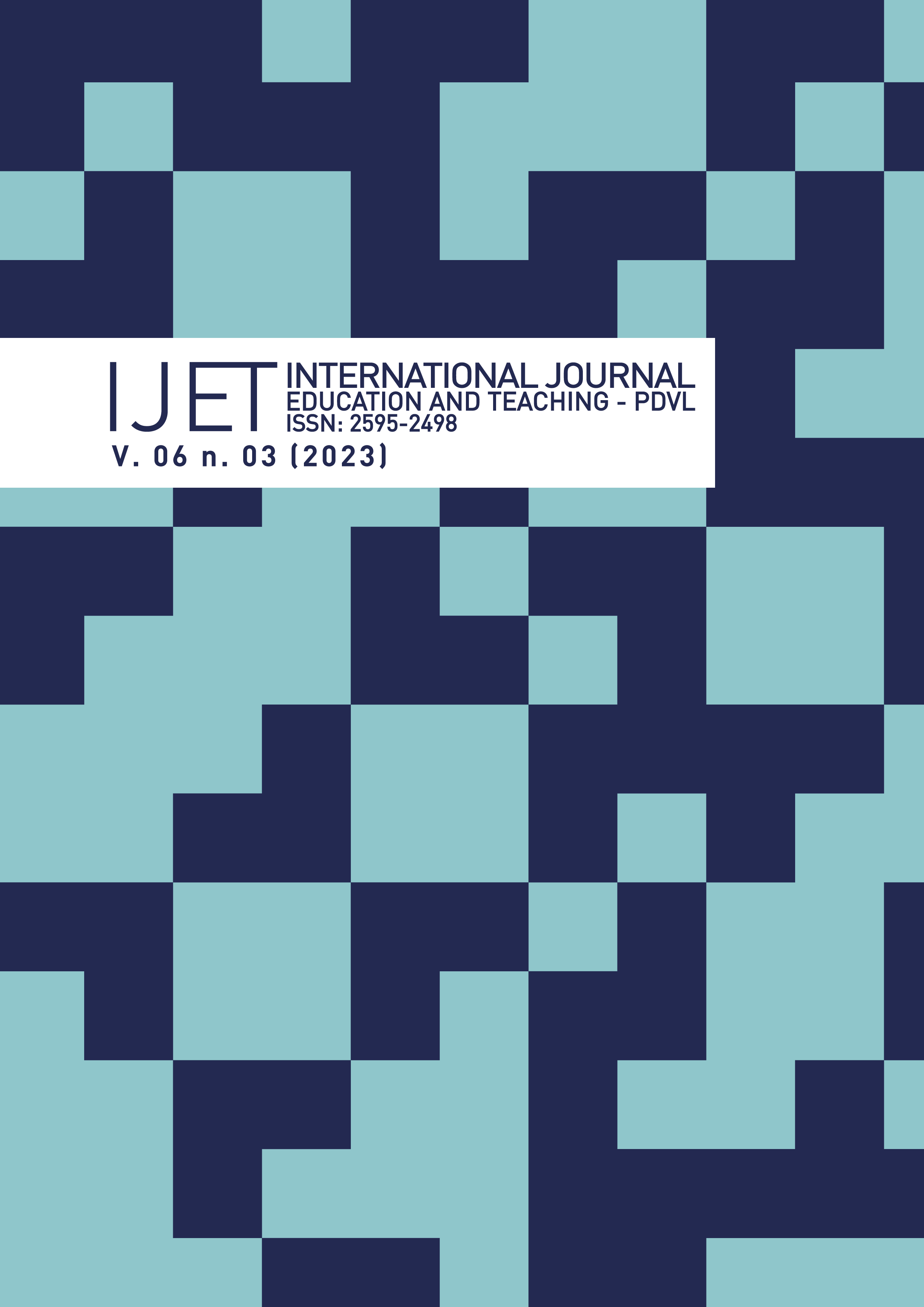DYSLEXIA: AN APPROACH TO ITS IMPLICATIONS IN THE SCHOOL CONTEXT
DOI:
https://doi.org/10.31692/2595-2498.v6i3.304Keywords:
dificuldade de aprendizagem, distúrbios, leitura, escrita, dislexiaAbstract
The present study aims to address dyslexia as one of the most significant problems within the teaching and learning system that influences the ability to read, knowledge of words, writing, spelling, as well as the interpretation and understanding of texts and activities that encompass logical reasoning. The present research is justified by the idea of disseminating the information found in the educational context and its main objective is to characterize dyslexia: symptoms, causes, diagnoses and perspectives for interventions by education professionals. The school institution, as responsible for improving the didactic potential of children, must have in its pedagogical and teaching team, qualified professionals who have the ability to provide a diagnosis of dyslexia and learning difficulties, as quickly as possible, directing them to a adequate treatment with specialists and practice pedagogical activities that involve the dyslexic learner. The entire school process must be aimed at guiding students with dyslexia to overcome barriers, in the face of which the educator must have an attitude of receptivity, tolerance, patience, perseverance and propose specific educational projects of assistance and assistance in their development. To this end, we relied on bibliographical research that included analyzes of academic works and authors with in-depth knowledge on the topic. Among the multiple bases for such theoretical immersion, we focused on the following authors, with vast publications and studies in the area, namely: dealing with learning difficulties, in general: Coelho (2016), Paín (1985), Ohlweiler (2016 ); Reading and writing: Solé (1998), Rebelo (1993); dyslexia as a specific learning problem: Shaywitz (2006), Hennigh (2003), Moura, Pereira and Simões (2018).
Downloads
References
American Psychiatric Association (APA). Manual diagnóstico e estatístico de transtornos mentais: DSM-5. 5. ed. Porto Alegre: Artmed, 2014.
COELHO, Diana Tereso. Dificuldades de aprendizagem específicas. Dislexia, Disgrafia, Disortografia e Discalculia. 2016. Portugal: Areal Editores.
CRUZ, V. Dificuldades de Aprendizagem – fundamentos. Porto: Porto Editora, 1999.
FELIX, Tatiana E. R.; FREIRE, Regina Maria. Dislexia sob o olhar da literatura específica. Distúrbios da Comunicação, São Paulo, v. 24, n. 3, p.299-307, 2012
FERNÁNDEZ, A. (1991). A Inteligência Aprisionada. Porto Alegre: Artmed Editora.
HENNIGH, K. A. (2003). Compreender a Dislexia: Um guia para pais e professores. Porto: Porto Editora.
MOURA, O.; PEREIRA, M.; SIMÕES, M. R. (2018). DISLEXIA – Teoria, Avaliação e Intervenção. Editora: PACTOR, Lisboa.
NARDI, R.; CORTELLA, B. S. C. Formação de professores de Física: das intenções legais ao discurso dos formadores. In: XVI Simpósio Nacional de Ensino de Física, 2005, Rio de Janeiro. Caderno de Resumos. São Paulo - SP: Sociedade Brasileira de Física, 2005. v. 1. p. 175-175, 2005.
OHLWEILER, Lygia. Transtornos da Aprendizagem. Abordagem Neurobiológica e Multidisciplinar. Artmed Editora S.A. - 2ª Edição, 2015.
PAÍN, S. (1985). Diagnóstico e Tratamento dos Problemas de Aprendizagem. Porto Alegre: Artmed, 1985.
PINHEIRO, S. M. L. S. R. (2009). Dificuldades Específicas de Aprendizagem: A Dislexia. Tese de Mestrado em Educação Especial. Universidade Portucalense Infante D. Henrique, Porto, 129 pp. Disponível em:http://repositorio.uportu.pt:8080/handle/11328/89. Acesso em: 20 de outubro de 2022.
REBELO, J. (1993). Dificuldades da leitura e da escrita em alunos do ensino básico. Coleção Horizontes da Didáctica. Porto: Edições Asa.
SALES, E. S.; MONTEIRO, I. G. S.; LIMA, K. S. Formação de professor, diretrizes da Educação brasileira para o ensino de Química e Avaliação: saberes docentes essenciais à formação docente. In: VII Colóquio Internacional Educação e Contemporaneidade, 2013, São Cristóvão - SE. Anais do Colóquio Internacional Educação e Contemporaneidade, 2013.
SHAYWITZ, Sally. (2006). Entendendo a Dislexia – Um novo e completo programa para todos os níveis de problemas de leitura. Editora: Artmed.
SILVA, F. T. G. T. (2004). Lado a Lado – Experiências com a Dislexia. Coleção Educação Hoje. Lisboa: Textos Editores.
SOLÉ, Isabel. Estratégias de Leitura. 6ª ed. – Porto Alegre: Artmed, 1998.
TORRES & FERNÁNDEZ, 2001; SHAYWITZ, 2008 e SILVA & DENARDI, 2011. Indicadores Primários/Sinais de Alerta de Dislexia nos diferentes níveis de ensino. Dificuldades de Aprendizagem Especificas. Dislexia, Disgrafia, Disortografia e Discalculia, pg. 19. Areal Editores. Departamento de Educação, UFRPE, 2008.
TORRES, R. & FERNÁNDEZ, P. (2001). Dislexia, Disortografia e Disgrafia. Amadora: McGraw-Hill.

Downloads
Published
Conference Proceedings Volume
Section
License
Copyright (c) 2023 MARIA RITA DE CÁSSIA CUNHA (Autor)

This work is licensed under a Creative Commons Attribution 4.0 International License.





